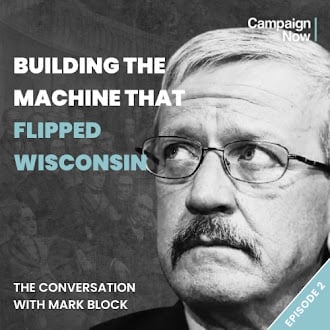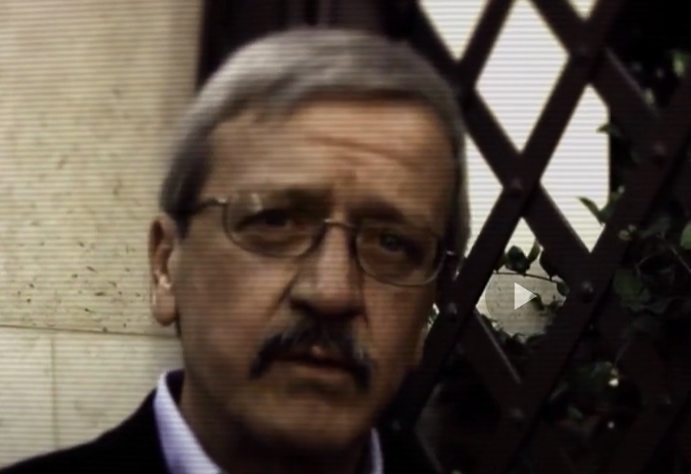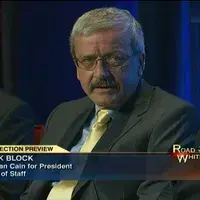Mark Block’s strategy of decentralization, media amplification, and parallel infrastructure turned Wisconsin from a purple battleground into a conservative stronghold.
What to Know:
- After Watergate, Wisconsin Republicans rebuilt from the ground up by recruiting young candidates and relying heavily on party machinery.
- By the 2010s, Mark Block and others abandoned centralized GOP control in favor of outside groups like Americans for Prosperity.
- Block’s coalition mimicked the left’s infrastructure in Colorado, using think tanks, legal defense orgs, and civic education groups to push conservative priorities.
- Media stunts, earned coverage, and low-cost viral content replaced traditional ad buys and message discipline.
- In 2010, the culmination of the right's new privatized strategy led to Wisconsin Republicans sweeping every major office and flipping the legislature.
Before Wisconsin became a national symbol of conservative resurgence, it was a fractured battleground where traditional party machinery was failing to compete. Mark Block, a longtime political operative, played a central role in building the new model that replaced it. He redefines power as shifting from a centralized party to a decentralized network of grassroots groups, media operators, and external influencers. This was a structural overhaul of how conservative politics worked in the state and, eventually, across the country.
🗣️ This insight comes directly from The Conversation with Mark Block, a three-part podcast and video series that inspired this article. You can listen to and watch the full series on YouTube or SoundCloud.
From Party Machines to Grassroots Reinvention
In the 1970s and early 1980s, political campaigns were built from the ground up through the party itself. The Republican Party was the center of gravity. If you wanted to run, fundraise, or gain endorsements, it all came through that centralized system. Block remembers just how dominant the party once was.
“Absolutely much more than it is today,” Block said. “The party was the organization. You couldn’t move without it.”
Following Watergate, that structure was decimated.
“After Watergate, the Republican Party was considered gone, done, finished. We had to rebuild from literally nothing.”
That rebuilding process relied on recruiting young conservatives to run for local offices. Block was one of them. He became the first 18-year-old elected in Wisconsin after the voting age was lowered. As he rose through the ranks, he observed the traditional party structure lose relevance—and later, get replaced.
The Rise of Outside Groups and the Wisconsin Model
By the late 1980s, Block began to notice what he calls a “shift away from party to third-party or outside group influence.” That shift accelerated in the 2000s. After being sidelined from politics for three years due to a campaign finance violation, Block returned to find a different political landscape. He joined Americans for Prosperity in 2005 and immediately realized the Wisconsin GOP was no longer equipped to compete.
“We did an intense deep dive on what the other side [Democrats] does,” he said. “For every one grassroots operation we had, the Democrats had 10. For every think tank we had, they had six. For every legal entity we had, they had five. We had none.”
That research was funded by the Bradley Foundation. The model they decided to emulate was what Colorado Democrats had pioneered—privatizing the political process by building independent groups with different functions, all working toward the same end.
“All of these organizations with different functions to do different parts of the political process without having the party involved,” Block explained.
In Wisconsin, this idea became reality through the Wisconsin Prosperity Network. It was not one group, but a system: a think tank, a legal team, a candidate recruitment engine, and a civic education program—all operating outside the formal GOP.
“The parties back then—you needed them. Where today, quite frankly, I think they’re more of a hindrance than they are.”
Outrage, Earned Media, and New Tactics
Americans for Prosperity-Wisconsin, which had just 250 members when Block joined, exploded to over 100,000 by 2010. It was the new organizing core. The legal team challenged state regulations that threatened Tea Party groups. This wasn’t reform—it was a full-scale reorganization of power on the right.
The rise of the Tea Party gave this structure a surge of public momentum. Obamacare was the rallying cry, and Block leaned into that outrage.
“The best way to get people to vote is when they’re upset,” he said. “Our rallies would start with 100 people, then 300, then 3,000. Eventually, we had 10,000 people showing up. It was social media without Facebook.”
Media played a central role in this new model. Block focused heavily on “earned media,” creating the perception of power and presence without paying for it.
He recounted one tactic that became a signature: using a free “test” digital billboard from Clear Channel to promote a rally, then taking photos during rush hour and pushing the image to reporters.
“We went out there at 5 o’clock, took a picture when traffic was backed up on I-94. I sent the image to the media and boom—it looked like we had paid advertising,” he said. “We got huge press coverage, and it cost nothing.”
A Final Reflection on What Changed
Reflecting on how campaigns were run before the digital age, Block paints a picture that is almost quaint by today’s standards.
“It was just your basic, you know, knocking on doors, introducing yourself, some yard signs, and TV commercials,” he said. “Probably mass meter radio was bigger than TV. They get a lot of money on radio, cause I think more people got their information from radio, quite frankly.”
He still remembers his earliest brush with political money, during the 1972 Nixon campaign.
“He had a suitcase full of cash,” Block said, referring to Roger Stone. “This is before Watergate, before FEC laws. He opened his briefcase—full of $100 bills—and started handing them to me, saying, ‘You gotta do a beer party for Nixon.’”
To Block, what changed wasn’t just the media or the money. It was who got to wield power—and how. Parties, in his view, became too slow and too compromised to adapt.
“You don’t need them,” he said. “What you need is structure, strategy, and something to believe in.”
Wrap Up
Mark Block’s story is not just about one man’s political evolution. It is a case study in how power, once centralized within party walls, migrated into looser networks of influence, media, and mobilization. The success of this decentralized model in Wisconsin during the 2010s reshaped the state’s political identity and previewed national trends that would soon follow.
Whether one views this transformation as a triumph of grassroots strategy or a cautionary tale about party erosion, the takeaway is clear: modern campaigns are no longer defined by the party’s agenda, but by the people and systems capable of bypassing it. According to Block, the party wasn't outmaneuvered; it simply couldn't keep up.
🎧 To explore the intricacies of this transformation and to listen to Mark Block’s insights in his own words, please refer to The Conversation with Mark Block, our original three-part podcast and video series on YouTube and SoundCloud.





